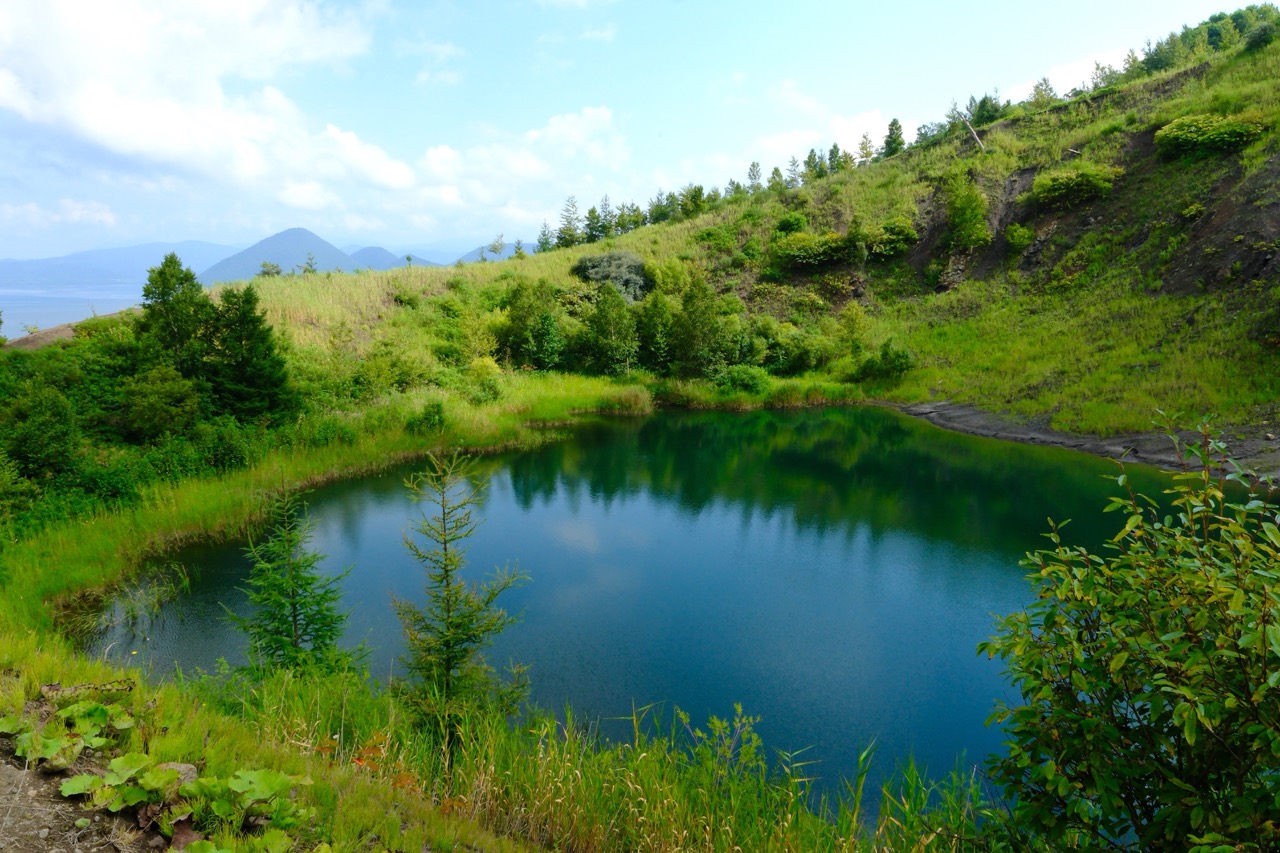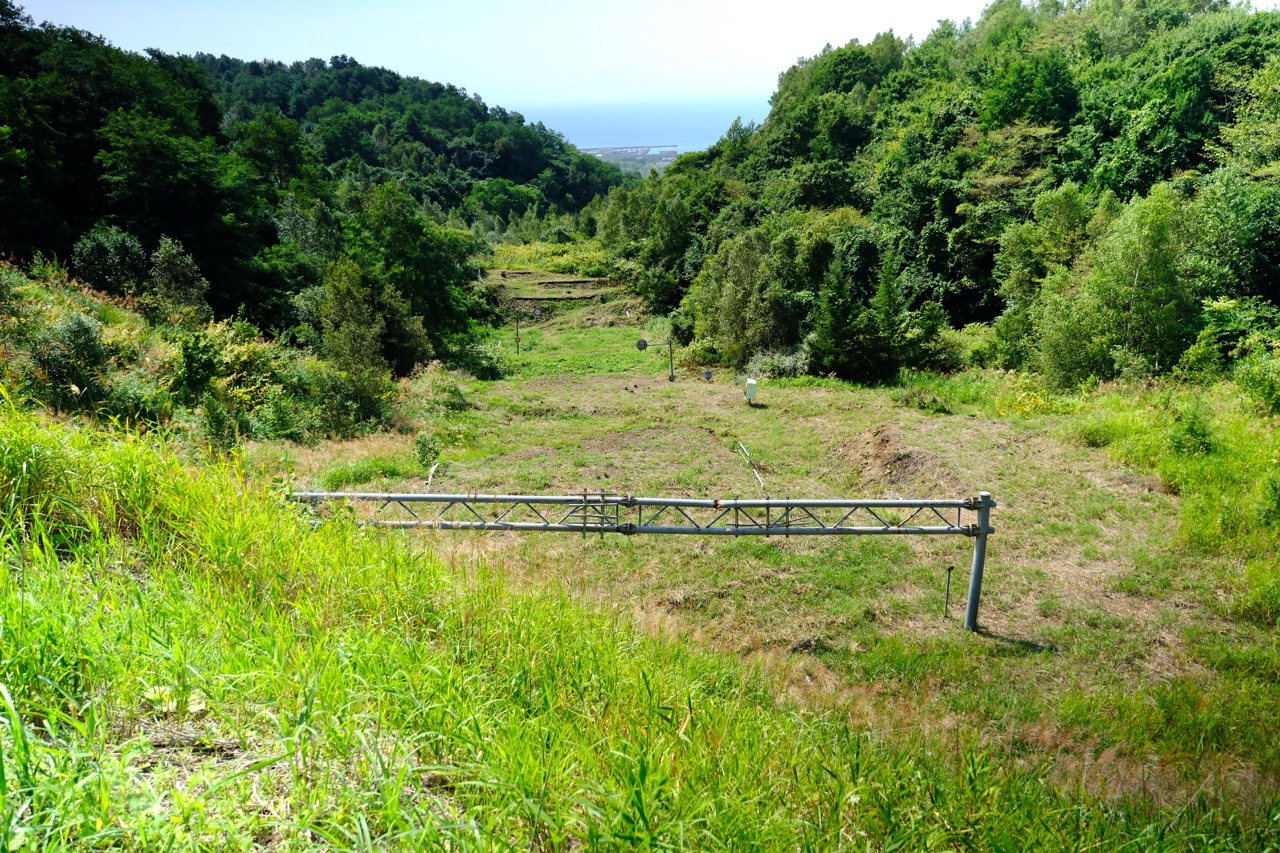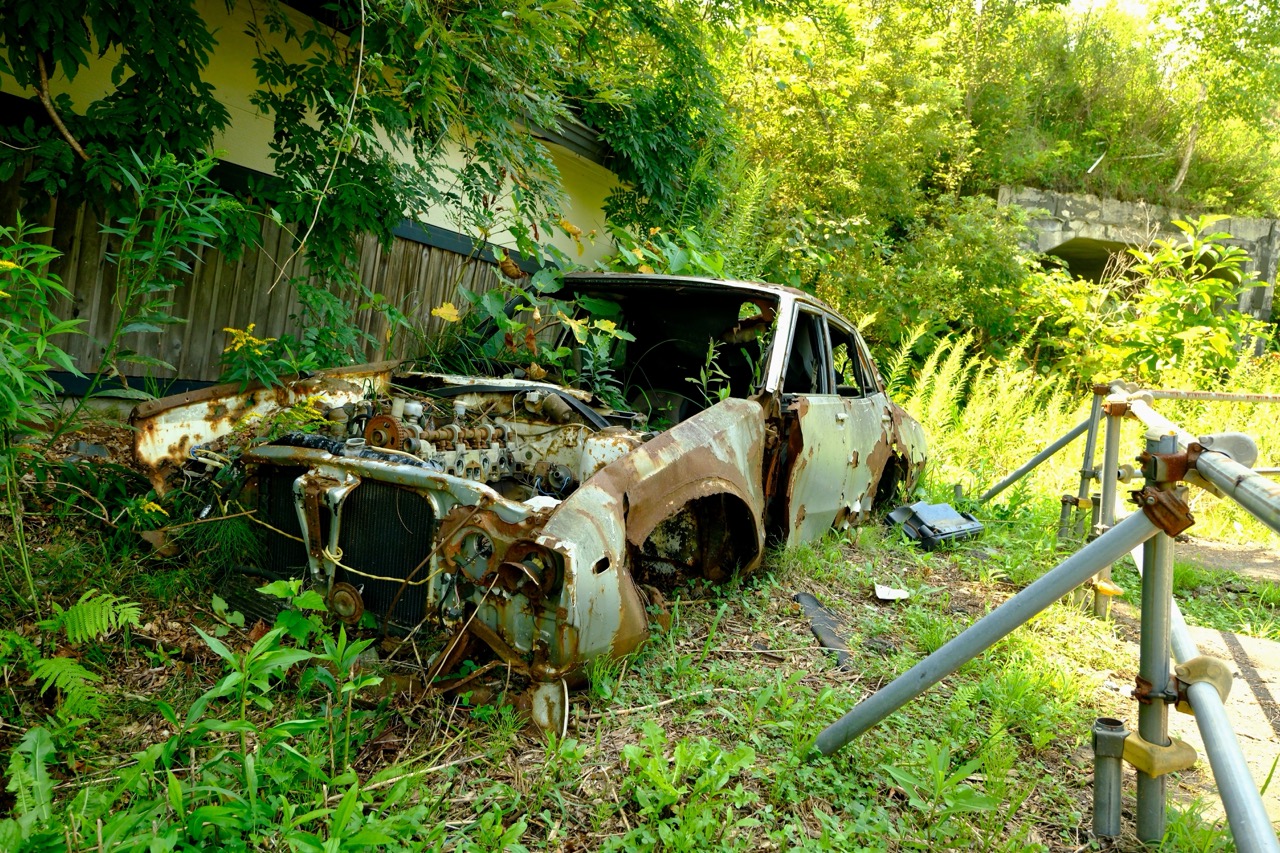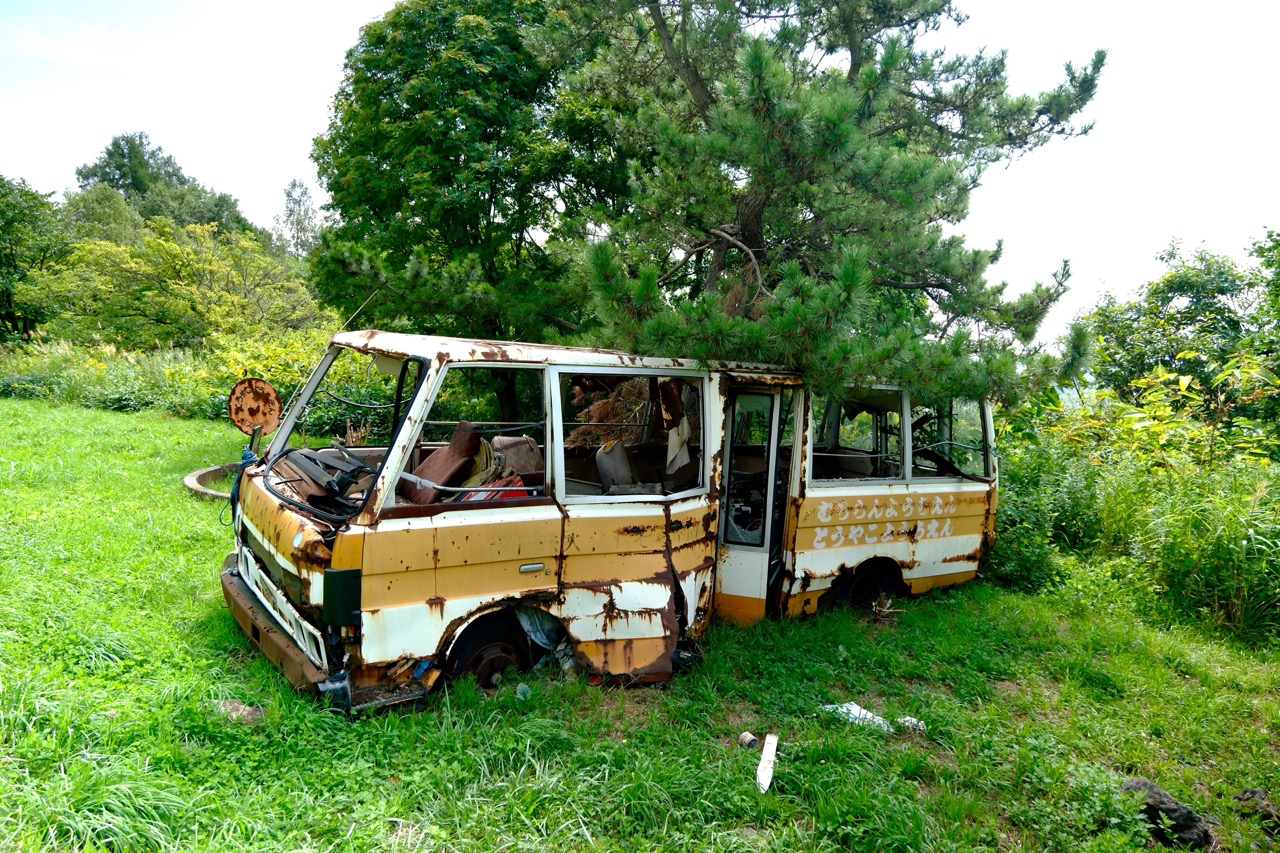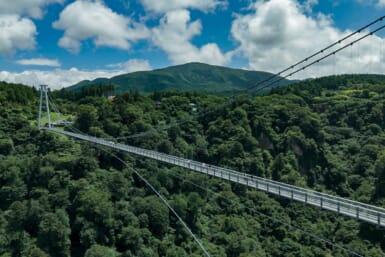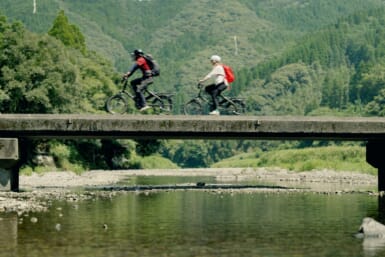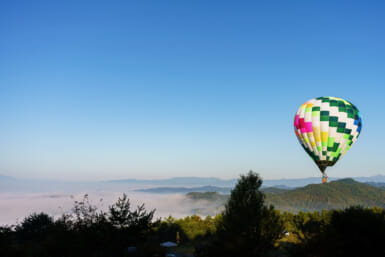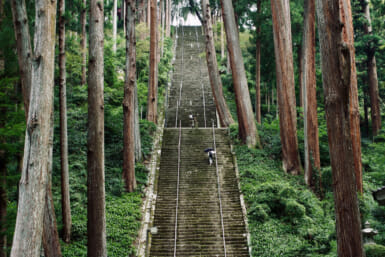Located in Shikotsu-Toya National Park in the southwest region of Hokkaido, Mount Usu overlooks the transparent waters of the nearby Lake Toya, providing stunning views. It’s an active stratovolcano, and its frequent eruptions have significantly shaped the landscape around it, resulting in fascinating and otherworldly scenery.
The mountain and surrounding area were abandoned following an eruption in 2000. (Fortunately, the mountain is constantly monitored for eruptions, and evacuations were carried out well in advance, preventing any casualties.) Since then, nature has been allowed to fully run its course, turning what would already be a beautiful hike on its own into a captivating adventure through abandoned highways and leaning buildings in scenes reminiscent of a future world that has long forgotten people.
Given the area’s distinctive history, it’s best traversed with a certified guide, like local guide Egawa-san, who, with special permission, leads visitors through restricted zones where the aftermath of Mount Usu’s eruptions can be seen up close.
Beauty in Destruction: Hiking Mount Usu
The hike begins by what was once a large apartment complex, now hollowed out with a young layer of grass and trees growing upon its roof. When the eruption happened back in 2000, boulders, rocks and mud were sent flying across the mountain, destroying some buildings and putting holes through the roofs of many.
As hikers begin the ascent towards the top, the craters from eruptions long past begin to come into view. With a guide present, visitors are able to walk along the edge of these massive craters, now filled with small, glimmering lakes of rainwater, and take in the power of nature up close.
Mount Usu’s magma is quite viscous, meaning that when it comes into contact with areas with large amounts of groundwater, an explosion is triggered, shattering the ground below and sending debris flying. While these eruptions can destroy existing flora, Mount Usu demonstrates the cyclical nature of life. Although past eruptions did result in some trees becoming dead husks, this in turn provided a perfect environment for local woodpecker species, who feed on the insect larvae inside the dead trees.
Along the way, you’ll pass Old Route 230 and Lake Toya Kizi Park, the latter of which has now sunken into a small pond. The dead trees and road signs poking out of the water depicts a scene like something out of an apocalyptic film. Nearby the park, Old Route 230, once sloping downhill, creeps upward into the mountain. The fault activity has lifted the road up, turning it into something like a paved hike up the mountain. Alongside it, a few houses remain. However, these too have now been tilted, sloping heavily to one side. Standing in the door frame creates a strange optical illusion that you are leaning forward.
While the scenery may sound devoid of life, that’s far from the case. In truth, it’s brimming with nature. Young trees, still bright green and short, break through every nook and cranny of the houses and roads. Along the roadside, insects buzz and birds sing. It’s clear that life has returned after the eruption and is flourishing.
The route eventually leads to an abandoned kindergarten, now riddled with holes from the falling rocks. As light filters down through the holes on the roof, the inside of the building is illuminated with columns of light, and it over-flows with trees, creating a scene like something out of a dream.
Hiking through Mount Usu not only provides visitors a chance to interact with Hokkaido’s serene natural beauty, but also a look into a fascinating contrast between civilization and nature — a contrast that results in a one-of-a-kind hiking experience that is not to be missed.
Mount Usu’s Potential
Local guide Egawa-san does not view the eruption nor the abandoned buildings as a negative, but rather some-thing to look to as a lesson for the future. According to Egawa-san, natural disasters — such as volcanic eruptions, earthquakes and typhoons — have a deep history within Japan and are a phenomenon that can happen anywhere at any time. The Mount Usu area provides an example of what people can do to better prepare for future disasters, and how to move forward after such events.
In the case of Mount Usu, that includes turning this once-abandoned area into a haven for nature lovers. The area around Mount Usu was recognized as an UNESCO Global Geopark back in 2015, and most of the current hiking trails have been cleared in the past two years after under-going strenuous government safety checks. There still remains plenty of potential to add new trails and expand the Mount Nishi-yama Base Crater Walkway.
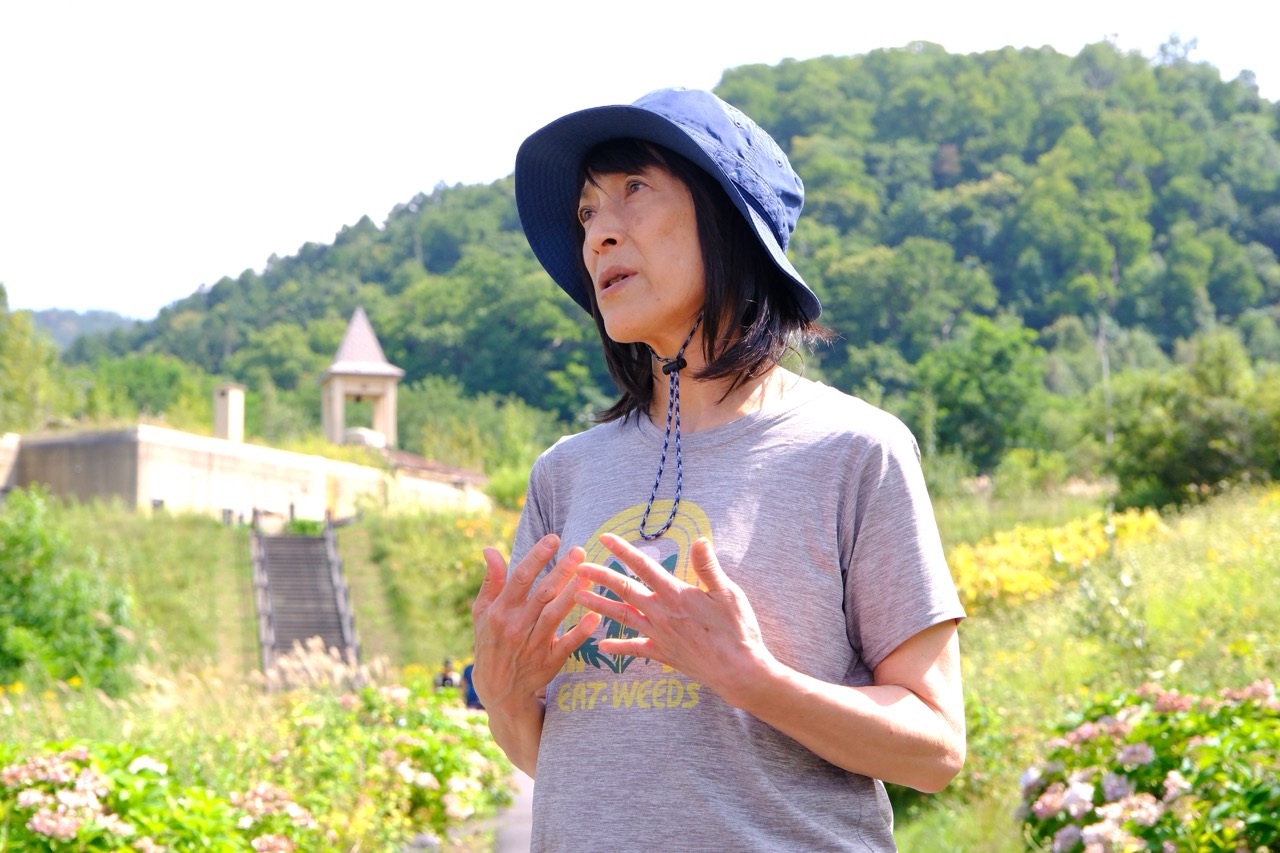
Inspiration From a Local Guide
Initially inspired by a friend who was a local guide, Egawa-san decided to give it a try, too, but was surprised at the amount of preparation that goes into the job. And yet, preparing for each tour remains one of her favorite aspects of being a guide.
“I love this job,” she says. “My favorite part is the preparation phase; studying diverse things about the land while exploring new places is great. And getting to communicate that information that I’ve obtained to people from all over is very fun for me.” She continues, “If I want participants to take anything away from this tour, it would be to recognize the small things that are all around you every day, and to think to yourself, ‘I’m glad I was born on Earth’ when you leave.”
With the recent increase in adventure tourism, Egawa-san’s dream of being a guide has been realized beyond her expectations. “When I was younger, I never imagined I could have a job like this. Yet, thanks to the advent of adventure tourism, I’ve been able to do what I have always wanted for my career. It’s a dream come true.”
Egawa-san hopes to inspire younger generations with her role as a tour guide to follow their own dreams, aiming for the career that they truly want to do instead of what simply seems reasonable.
Visit https://at-guides-hokkaido-japan.com/index.php for more information.

